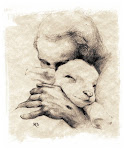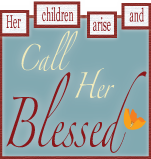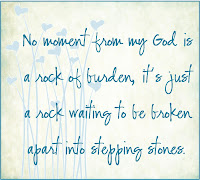
Thursday's Therapy
Violent Death: Restorative Retelling
Part Six
"Coping" with Violent Death
It is critically important in surviving the violent death of a loved one that you become able to cope with the horror and trauma of death while walking through and staying connected with the vitality of one's own life.
After surviving Merry Katherine's death for three years and almost ten months now, I will tell you this "coping" amidst the "vitality of one's own life" is not an easy feat to accomplish. Being so strongly connected to my children and having one ripped out of the very center of the fabric of my life feels like having my very heart ripped out.
As an example of my ongoing debilitation by the severe loss...
I have been practicing as a mental-health counselor (psychotherapist) for over thirty-years in private-practice, working with people who are troubled mentally, emotionally, and/or spiritually and who feel very "stuck" in that pain. My job is to help them get "unstuck" and move forward with meaning and wholeness... This work can be extremely challenging and intensive as I often work with very traumatized and/or abused individuals.
With a loss of such magnitude as the death of my child's, I was almost completely stymied in doing very much at all of my life's work.
How could I help someone troubled and stuck when I was even more troubled and stuck?
My "full-time job" needed to be my own grief work; I could do a little of my counseling "on the side" at stable points in the midst of my grief-work. (And I never knew when those stable times would be, so the few clients I had coming in had to check with me on their given appointment day to see if that day would still work for me amidst my grief.) So it has been an arduous process so far to walk through this grief in a way that will be comforting and will allow the time for the tedious processing through each and every component of grief that arises (and often arises again and again).
If we cannot learn to speak and/or write out our grief over our child's violent death (and to me, all deaths of a child are violent), we will get stuck in the overwhelming grief process. And what a potentially overwhelming job is before us:
It has been our job to nurture, protect, and facilitate our child's continued growth toward adulthood; when that job is abruptly brought to a standstill in their death, we too are brought to a standstill. All that we stand for has been attacked. All the love in our hearts for our child has been brutally assaulted. One of our precious children to whom our lives are most dedicated has been accosted and demolished. Now, we are to try to live?
I tell my clients,
"There is no cure for grief, but there can be comfort found within the grieving process.So the real key to working through the lifelong grief process is to keep the grief flowing."
***
Now Tommy and I spend much time walking through our grief, but when the grief compounded for him after two years (the numbness does begin wearing off...), it was overwhelming for him. He began getting stuck in his grief process...
Tommy shared tonight that in November of 2008, about two years after Merry Katherine's death, he found himself just wanting to die he was so depressed. After getting a laptop computer the following Christmas (of 2008), he began journaling around February of 2009. After journaling for awhile, he found his deep depression lifting so that he could function better (and have some sense of hope)...He has continued to feel much relief after such a frightening depression though grief continues to be extremely painful. He said tonight,
"If we don't effectively communicate (and process through) our grief, the violent death of our child will pull us down. It has a grip on us that won't let go if we don't consciously walk it through and keep it talked and/or written out."
***
In "Trauma-Therapy-speak," scientists studying the brain are discovering
Severe grief like child-loss grief can actually do damage to the brain.The traumatized hippocampus actually begins shrinking!
The trauma is so severe that when it comes into the brain through the senses, it gets stuck in the amygdala, as the amygdala, very aware of the severity of the trauma, shuts down the pathways for that trauma to go anywhere else in the brain but shut up in the area of the brain called the hippocampus to thus enable the traumatized person to take ACTION, to "run," to "get out of danger," to "escape" for safety.
But this particular trauma of child-loss cannot be escaped in that way. So, we have to learn how to reach the trauma-material hidden within our hippocampus to process the trauma out effectively, coaxing the amygdala to let a little out at a time for us to "walk-through," and yet still function as a vital, alive person that is not completely overwhelmed by the trauma.
As we have discussed in former Thursday Therapy posts, it is critical to move that trauma material on through the brain, carving out new neural passageways similar to when we were a baby.
The trauma must move from the amygdala and the hippocampus into the prefrontal lobe of the brain so that the grief and trauma stored as horrifying, traumatizing sensations can be processed into a coherent, meaningful story which doesn't
- deny our child's death ("avoidance"), nor
- fixate on our child's death ("possession"), but
- encompasses our child's death within the narrative of the rest of our life's story which includes the vitality of our life and the vitality of our child's life ("restorative retelling").
***
Naming
When God created the Heavens and earth, He called forth, "named" things into being. When He separated light from dark, He "named" them. He called the light "day," and the dark "night." When He created the first man, He "named" him Adam. Then He commissioned Adam to "name" the different components of his universe including his own mate and all of the animals and other living "beings" in the world!
God even continues to call us to "Name" our reality. The way He designed our brain, it seems He wants us to continue "naming" His world, including the dynamics one cannot see, like coping with our child's death, incorporating the understanding we have with the meaning that each aspect of our traumatic grief has for us as it is experienced and processed in our life.
The reason good therapy works is that it helps us to put names on the realities and dynamics in our life so that we can become healthier in dealing with those realities. Therapy helps us to reframe our life into a coherent narrative that reflects our life's meaning, and challenges us to grapple with, and find meaning in those hurdles that come our way.
So too we in our grief, must learn to process the grief on a regular basis, giving name to what we discover.
If we find ourselves getting "stuck," it is so important to seek out those whom we trust and respect to help us process through our thoughts and feelings until we get "unstuck" and thus can continue the healthy flow of our grief.
***
The way that Dr. Edward K. Rynearson explains this Healing Process is so profound, I told Tommy that for a counselor in the work of helping people cope in life,
"Rynearson's following words are tantamount in importance for the psychotherapist in dealing with, and helping others to deal with, traumatic child-loss as would be the importance to the scientist of the discovery of the cure for cancer:"
Dr. Rynearson:
"Violent dying is overwhelming because of its immediacy and physicality. The imaginary reenactment {playing over and over the violence our child experienced} is consuming because the family member has no distance or referent to protect them from the nameless terror."
'When terror and violent dying are nameless, they are disintegrating. There is an intimate link between naming, subjective meaning, and restoration.'
~(Lakoff & Johnson, 1980)
"Through naming the terror and retelling the violent dying, a symbol (word) and narrative (coherence) is created that contains the experience independent of its immediacy and physicality.
Naming and retelling gives a mediated relation to the experience. In being named and retold, the experience is rendered both present and absent. It is through language that the dying experience becomes suspended and objectified in a matrix of time and space.
The experience can be transformed with subjective meaning, through a symbolic and imaginary revision and restoration.
The clinician encourages naming and retelling of the violent death by listening and helping the family member tolerate and contain his or her terror. However, repeatedly naming and retelling the violent death is a form of possession.
A restorative retelling includes naming and retelling vital and life-affirming experiences that encompass and counterbalance the dying."
***
Rynearson describes some holocaust victims who held onto their grief in an unhealthy way so that it was not within a healing process, but was debilitating to the point of not being able to reclaim any of the vitality of life again:
These holocaust victims left oral recordings of their harrowing, victimizing experiences, but they seemed to relate their violent experiences in the manner that Rynearson refers to as "repeatedly naming and retelling the (violence)" in a way that is debilitating -- he calls this dynamic "possession," (being so possessed by the horror that any vital living is almost impossible):
{These particular holocaust victims told their story within a theme of} "deprival rather than survival, devoid of life-affirming value... (T)hose this identified with their memory of such massive atrocity cannot trust or commit to living again. They have been so dehumanized by the atrocity that they cannot be restored. No matter how they try, they cannot fully reconnect with the rapture of being alive."
He contrasted these victims (described above) who never left the debilitating phases of grief with the other healthier victims who were able to find meaning even amidst their debilitating sorrow, and thus were able to form a restorative narrative that helped them to heal even amidst their devastating situation:
"Subjective meaning gives a structure and direction to ongoing living. The structure and direction pivot on two unique human capacities--
- a conscious ordering of experience through the coherence of language, and
- a conscious choice in directing action.
Consciousness creates a transcendent meaning through symbolic language and elective acts.
These life-affirming words and enactments are the foundation of a meaningful restorative narrative. Meaning does not create an ending to the narrative of violent death, but begins a continuing life narrative that includes it."











































No comments:
Post a Comment